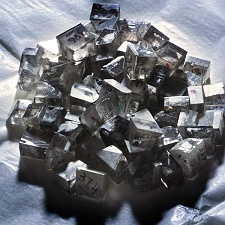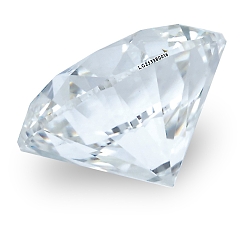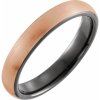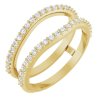We have a lot of adjectives associated with diamonds. They can be luxurious, the hardest, shining, bloody, but lately more and more lab-grown diamonds are appearing.
We come across the label lab-grown diamonds, i.e. diamonds that have been created by man in a laboratory. Thanks to this, people and nature no longer have to die. Luxury that does not burden the environment will now be available to many more people.

HISTORY OF LAB-GROWN DIAMOND PRODUCTION
The first ideas for the production of laboratory diamond arose as early as 1892. It was the French chemist Henry Moissan who tried to make it. But it wasn't until 1952 that the jewellery world saw the first tiny synthetic diamonds. Unfortunately, due to the tedious technology, they were not applicable to the commercial market. The methods used to produce diamonds today have evolved greatly over the past 30 years.
They are experiencing the greatest boom only in the last 10 years. Recently, laboratory-produced diamonds for jewellery have finally reached our Czech market. Although we have been producing our own diamonds for industry for a long time.
LAB-GROWN DIAMONDS ARE ALSO LOVED BY FOREIGN STARS
Lab diamonds are very popular abroad and are even seen in celebrity jewellery. For example, Leonardo DiCaprio gave a large amount to the development of technologies for the laboratory production of diamonds. And he's not the only one. Lab-Grown diamonds were also liked by Meghan Markle, Evan Williams or Tony Fadel.
Even the chief designer of Apple, Jony Ive, together with the designer Marc Newson, designed a ring that is cut from a single piece of diamond. The ring reached a value of around 6 million crowns, but was finally auctioned for 10.4 million crowns. It should be added that a significant amount was added by the Gates Foundation and the proceeds went to support the fight against AIDS.

HOW SYNTHETIC DIAMONDS ARE MADE
There are currently two ways to make a diamond. The laboratory-made one is absolutely identical to the natural one. It has the same physical, chemical and optical properties. Even experts cannot tell a lab-grown diamond from a natural one without special equipment.
The most used method for the production of lab-grown diamonds is the HPHT (High-pressureHigh-temperature) method. The method simulates the conditions under which diamonds are formed naturally. A tiny piece of diamond, which can also be made in a lab, will grow into a larger diamond. The other way is CVD (ChemicalVaporDeposition). In this case, a gas is formed and a new one grows back on the tiny piece of diamond.


IMPACTS OF NATURAL DIAMOND MINING
For many years, people avoided synthetic diamonds. They saw them as less valuable. Despite the fact that lab-grown diamonds are absolutely identical to natural ones, their price is significantly lower. In addition, the mining of natural diamonds completely devastates the landscape. For 1 carat of diamond, it is necessary to extract up to 250 tons of soil on average, which changes the character of the landscape and its ecosystem.
And we're not even talking about suppressing the human rights of people who work for diamond mining in a conflict zone in Africa. In addition, the sale of blood diamonds there often leads to financing the purchase of weapons. Even the carbon footprint created by laboratory diamond production is many times lower than that created by conventional mining.
WHY BUY A LAB-GROWN DIAMOND?
If you care about the environment but love jewellery at the same time, a lab-grown diamond will be the one for you. During its production, the consumption of water, electricity and the carbon footprint are many times lower than during classic mining. Environmental sustainability is high on the list of values for lab-grown diamond producers. With no moral qualms, you can indulge in the sparkle of beautiful diamonds and save money on top of that.









